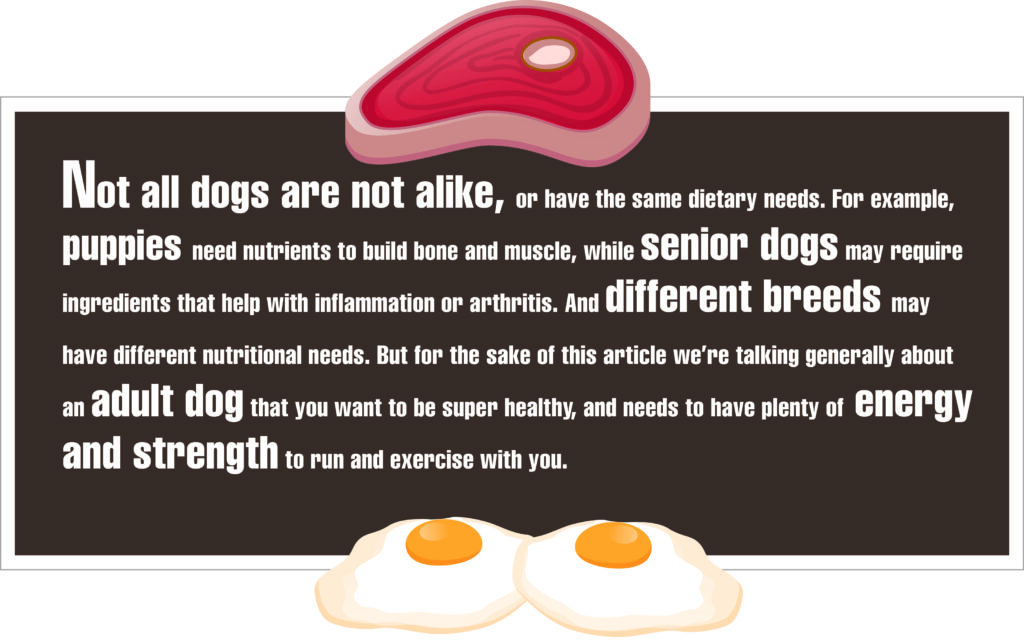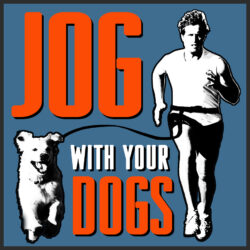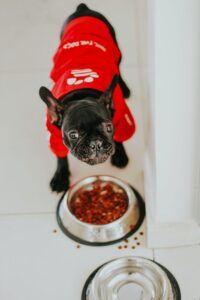 Interpreting ingredient labels
Interpreting ingredient labels
We all want to feed our dogs the best, healthiest food we can afford. For that, we know that we will have to read the ingredients on dog food packaging.
But what exactly should you look for? And what’s the meaning of the confusing terms that the manufacturers use?
Some common terms
Organic: Basically, organic dog food is defined the same way organic human food is: No artificial preservatives, coloring, or flavoring. No antibiotics or growth hormones in meat and meat by-products. No or little fillers.
Though usually more expensive, some dogs with sensitive stomachs do better on organic food.
Natural: Refers to the conditions under which the plants were grown or animals were raised. No artificial flavors, artificial colors, or artificial preservatives in the product.
New proteins: Meats from sources such as bison, kangaroo, rabbit, and other animals. They may be suitable for dogs that have difficulty eating chicken, beef, or other meats.
Grain-free: There’s not much evidence that supports the benefits of grain-free dog food. And there’s some evidence that an increase in a heart disease called cardiomyopathy is associated with eating grain-free diets, with some of the dogs improving when their diets are changed. Some dogs actually do better with the high-fiber content of grains. Grain-free diets are also being reviewed at this time by the FDA because there is the concern of a possible link of certain dogs or breeds of dogs to Dilated Cardiomyopathy (DCM) — a type of canine heart disease that affects the heart muscle in certain dogs or breeds of dogs.
Byproducts: This is a tricky one. Byproducts aren’t necessarily bad. They may include parts such as the liver (vitamin A) or blood, brains, bone, stomach, and cleaned intestines. These are unappetizing to us, but may be tasty to your dog. Unfortunately, byproducts can also mean anything left over on the floor of the slaughterhouse. Be careful of this one. Possible call the manufacturer
“Meal”: Any animal protein pet food ingredient that includes the word ‘meal’ behind it – is a rendered ingredient.
The USDA defines rendering as: “A process of using high temperature and pressure to convert whole animal and poultry carcasses or their by-products with no or very low value to safe, nutritional, and economically valuable products. It is a combination of mixing, cooking, pressurizing, fat melting, water evaporation, microbial and enzyme inactivation.“
Processing any protein source this way makes the protein easier, more cost effective to handle and store. The protein could also be more concentrated by weight because the water is taken out. Also possible is the inclusion of indigestible parts of an animal and the possibility that the meal has been over processed.
Preservatives: Preservatives help keep your dog food fresh, preservatives such as tocopherols and ascorbic acid as these come from natural sources. Beware of BHA and BHT as these are preservatives that have been banned in human foods in many countries due to cancer risks.
What goes into the best diet for a dog.
We think of dogs as meat eaters or carnivores – and they are. Protein is definitely the most important ingredient in a healthy diet for dogs. But dogs can’t live on protein alone. They’re also omnivores and require more in their diet than just protein. Fats, carbohydrates, vitamins and minerals are also required for optimal health.
Quality dog foods contain meat, vegetables, fruits, and grains. The best dog foods contain high-quality versions of these ingredients that are in the right blend for your dog’s digestive system.
Ingredient 1: “HIGH QUALITY PROTEIN” is the key.
Protein is essential to every part of a dog’s body. It builds and maintains muscle mass, and supports all systems of the body, like skeletal structure and cell growth. All enzymes are made up of proteins too. Proteins are essential to your dog’s digestion, immune system and hormone production. But not just any Protein. Your dog needs “high quality” protein.
By high quality protein, we mean beef, chicken, eggs (egg whites are actually the standard against which all other proteins are measured), fish, lamb and meat by-products. Meat by-products in pet foods, as defined by the Association of American Feed Control, refers to organ meats like liver, kidney, stomach, heart, blood, spleen, etc. (It does NOT mean hair, hide, hooves or feathers. Believe it or not, these are ingredients in some dog foods!).
Labels often use the term “crude protein”. Crude sounds like bad quality but it doesn’t mean that on an ingredients label. Crude protein, and crude fiber and crude fat, indicates the specific amount of each nutrient present in the dog food.
Another term that may sound suspicious, but isn’t, is “meal”. As in beef meal or chicken meal. This term means a condensed version of that nutrient. Beef meal will not have the water content of beef and therefore will be higher in protein by weight.
Ingredient 2: Fats are crucial as well
Fats in dog foods are supplied by both animal fat (like chicken, beef, pork or fish fat) and oils from plants (like canola, sunflower, safflower and flax). The building blocks of fats are fatty acids. Quality dog foods will list sources of fat that provide the proper balance of omega-3 and omega-6 fatty acids.
Beware of the generic term “animal fats” if listed in ingredients. It’s too vague and could include very nasty by-products derived from slaughterhouse waste. Possibly even diseased animals.
 The omega-3s in the fatty acids of fish are very beneficial to dogs. They are known to improve their coat and skin, reduce arthritic inflammation, help immune support, lower blood pressure and even help brain function. Wolves are said to prefer salmon in the wild when give a choice.
The omega-3s in the fatty acids of fish are very beneficial to dogs. They are known to improve their coat and skin, reduce arthritic inflammation, help immune support, lower blood pressure and even help brain function. Wolves are said to prefer salmon in the wild when give a choice.
Ingredient 3: Vitamins
Vitamins and minerals are essential for your dogs health. Vitamin E helps support the immune system. Vitamin A is important for healthy skin and hair. Vitamins are abundant in fruits and vegetables, which is why these ingredients are found in most dog foods.
Ingredient 4: Minerals
A dog’s body uses minerals to keep bones, muscles, heart, and brain working properly. Minerals play a large role in making enzymes and hormones. Minerals needed in larger amounts include calcium, phosphorus, magnesium, sodium, chloride, sulfur, and potassium.
Though needed in much smaller quantities, trace minerals are vital to cell function. Your dog’s body (ours too) is constantly generating tiny electrical impulses that move muscles, both voluntary muscles like walking, and involuntary muscles like a heartbeat. Without these trace minerals to generate and facilitate billions of tiny electrical impulses, muscles would not work.
Some important trace minerals are iron, zinc, copper, chromium, iodine, selenium, manganese and fluorine.
In dog food, minerals are largely in ingredients like vegetables, grains, meats, fruits and legumes. Supplements may also be added to boost the foods nutritional quality.
Ingredient 5: Carbs = Energy
A dog’s body doesn’t derive much nourishment from carbs, but they are a great source of energy. Dogs can burn protein to fuel activity, but carbs are terrific as an alternate fuel source during activity so that protein reserves don’t get used up. Carbs can provide energy while the (high quality) protein is used for other important things like strengthening the dog’s immune system, repairing cells, producing amino acids that replenish muscle, and the energy it takes to digest food. And some carbs (like those from beets) are high in fiber that can help bowel health/regularity.
The problem with most dog food recipes today is the proportion of carbs to proteins and fats. Historically, it’s thought that your dog’s ancestors consumed maybe 14 to 20 percent of their diet in carbs. Many dry dog foods you can find today contain somewhere between 46 and 74 percent carbohydrates! You have to do a lot of running to burn that off!
This is because carbs are cheaper to produce than proteins and fats. They make use of grains and grain by-products, which are very low cost. Carbs for dogs have a long shelf life and are easy to shape and mold into the cute dog food shapes (kibble, stars, and so on).
Common sources of carbohydrates are such items as rice, corn, wheat, barley, soy and beets.
So, it’s a judgment call. Carbs are good for energy. If you guys are running a lot, maybe the high: 50% carb mixture is good. If you’re getting out less often, maybe less carbs. Think of it as pasta for dogs.
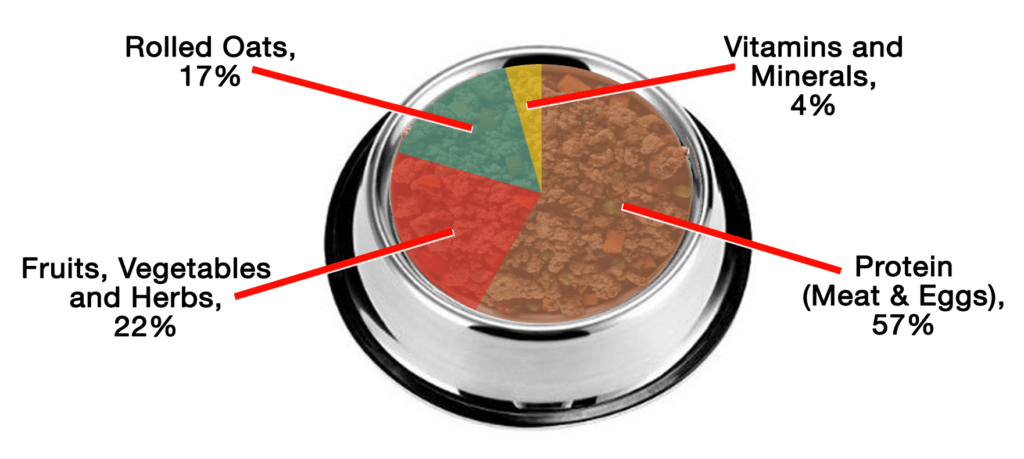
So… just read the ingredients then?
Just like we do for human food you have to read the ingredients. Ingredients are listed with the main ingredient at the top. The top three are the most important and you want them to be meat based. High quality meats such as beef, lamb, fish or poultry that is.
To complicate the pet owners job of interpreting the ingredients list, many dog food manufacturers misrepresent their ingredients. Just because a label says protein is the main ingredient, it doesn’t necessarily mean it’s an acceptable food for your dog. You have to make sure it’s high quality protein. Protein sources can be anything from high quality muscle sources (good for your dog), to feathers and horse hooves (indigestible and very bad for your dog).
Most manufacturers list a phone number on their package. You can call and get your questions answered if the protein source is confusing.

Dry or wet food?
Dry food has the benefit a helping oral hygiene due to the friction of the dry dog food against the tooth surface (like a tooth brush). It can help to keep the gums and teeth healthier than if the dog were eating only canned food.
A high quality dry food diet is sufficient for your dog without wet food. Just make sure your dogs water bowl is always full of clean water. My dogs tend to leave a bunch of crumbs in their drinking water so it needs to be changed often.
If your dog is picky and prefers the taste of a certain dry food but you can tell it’s not the highest quality, you might add a high quality canned food to the mix. Thus elevating the overall nutrition of your dog’s diet
Do’s and don’ts
Table scraps can be okay. As long as the scraps don’t contain anything too out of the ordinary for their diet. Nothing too fatty or spicy as these often brings on diarrhea.
Animal bones are highly discouraged. This seems to go against everything we know. We grew up seeing our dog chew bones. Dogs LOVE bones! The meat and muscle tissue on a bone are fine for the dog, but bone shards often get stuck between teeth or lacerate tissues along the digestive tact. Anywhere along the digestive tract – even the exit area! This can get extremely costly in vet bills, not to mention the pain your dog could experience.
Grapes , dairy products, chocolate or anything with caffeine, onions, garlic, and yeast dough are also highly discouraged. Sugarless gum sweetened with xylitol is highly toxic to dogs.
How much should you feed your dog?
Portion size depends on breed, size, and lifestyle. This takes some observation and common sense on your part. Every dog is a little different. If your dog is running a lot they may need more food. If you see them gaining weight, you may have to cut back a little on the amount they consume.
You should be able to feel your dogs ribs, but they shouldn’t be very visible. Also, the loss of a waist and pads of fat on hips and at the base of their tail are warning signs. As I’ve said elsewhere on this site, my vet told me “dogs should be shaped like Mae West” (Google her if you’re not familiar), big chest and thinner waist.
Bargain dog foods are no bargain for your pet.
High quality protein is not cheap and you get what you pay for. When we jog with our dogs we’re asking them to expend a lot of energy with us. They’re working out and toning their muscles. That requires quality food for quality performance. Dogs are more active and energetic when fed a high quality, meat-based diet.
Most dog food brands are formulated to meet minimum quality standards. Minimum quality means your dog will have to consume more to meet his requirements and will probably have more waste elimination as well.
Water, water, water
Did I mention your dog should always have water? Clean water. I know some people may take the bowl up during the night to prevent accidents, but a dog should always know where to get water, be it from a bowl or from you.
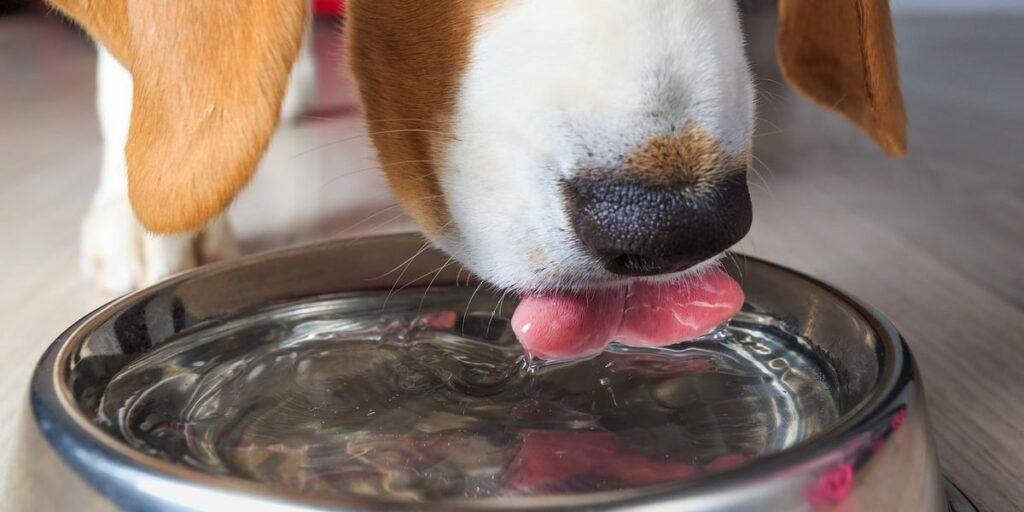
Their health is up to us
Dog food labels are confusing. Hopefully this article helped shed some light on some of the confusing terms used by manufacturers. Your vet is always a good source for more information regarding your pets nutrition.
Dogs can’t shop for themselves. It’s up to us to feed them good, nutritious food. Quality products will optimize their health and quality of life. And they’ll enjoy their run with us even more!
